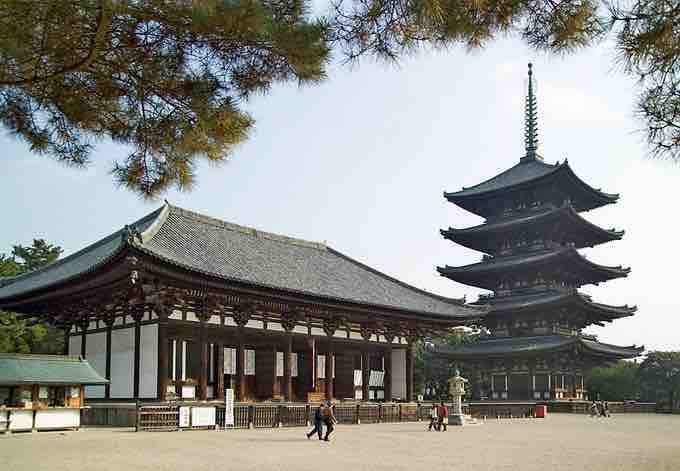Buddhism Reaches Japan
Before the introduction of Buddhism, Japan had already been the seat of various cultural and artistic influences, from the abstract linear decorative art of the indigenous Neolithic Jōmon (10500 BCE to 300 BCE), to the pottery and bronze of the Yayoi period and the Haniwa art (terracotta clay figures used as funerary objects) of the Kofun period. The Japanese were introduced to Buddhism in the 6th century CE, when missionary monks traveled to the islands together with numerous scriptures and works of art. The Buddhist religion was adopted by the state in the following century. Located geographically at the end of the Silk Road, Japan was able to preserve many aspects of Buddhism at the very time it was disappearing in India and being suppressed in Central Asia and China.
Buddhist Art
From 711, numerous temples and monasteries were built in the capital city of Nara, including a five-story pagoda, the Golden Hall of the Horyuji, and the Kōfuku-ji temple. Countless paintings and sculptures were made, often under governmental sponsorship. Indian, Hellenistic, Chinese, and Korean artistic influences blended into an original style characterized by its realism and gracefulness.

Kōfuku-ji
Five-story pagoda and Tōkondō.
The creation of Japanese Buddhist art was especially rich between the 8th and 13th centuries during the periods of Nara, Heian, and Kamakura. Japan developed an extremely rich figurative art for the pantheon of Buddhist deities, sometimes combined with Hindu and Shinto influences. This art tends to be very varied, creative, and bold.

The Asura in Kōfuku-ji, Nara (734)
A sculpture of an Asura, a type of supernatural being in traditional Buddhist cosmology.
Zen Art
From the 12th and 13th centuries, art in Japan further developed through the introduction of Zen art, which reached its apogee in the Muromachi Period (1337 - 1573), following the introduction of the faith by Dōgen Zenji and Myōan Eisai upon their return from China. Zen art is primarily characterized by original paintings (such as sumi-e) and poetry (especially haikus) that strive to express the true essence of the world through impressionistic and unadorned representations. The search for enlightenment in the moment also led to the development of other important derivative arts in Japan, such as the Chanoyu tea ceremony or the Ikebana art of flower arrangement. This evolution went as far as to consider almost any human activity as an art with a strong spiritual and aesthetic content, first and foremost in those activities related to combat techniques (martial arts).